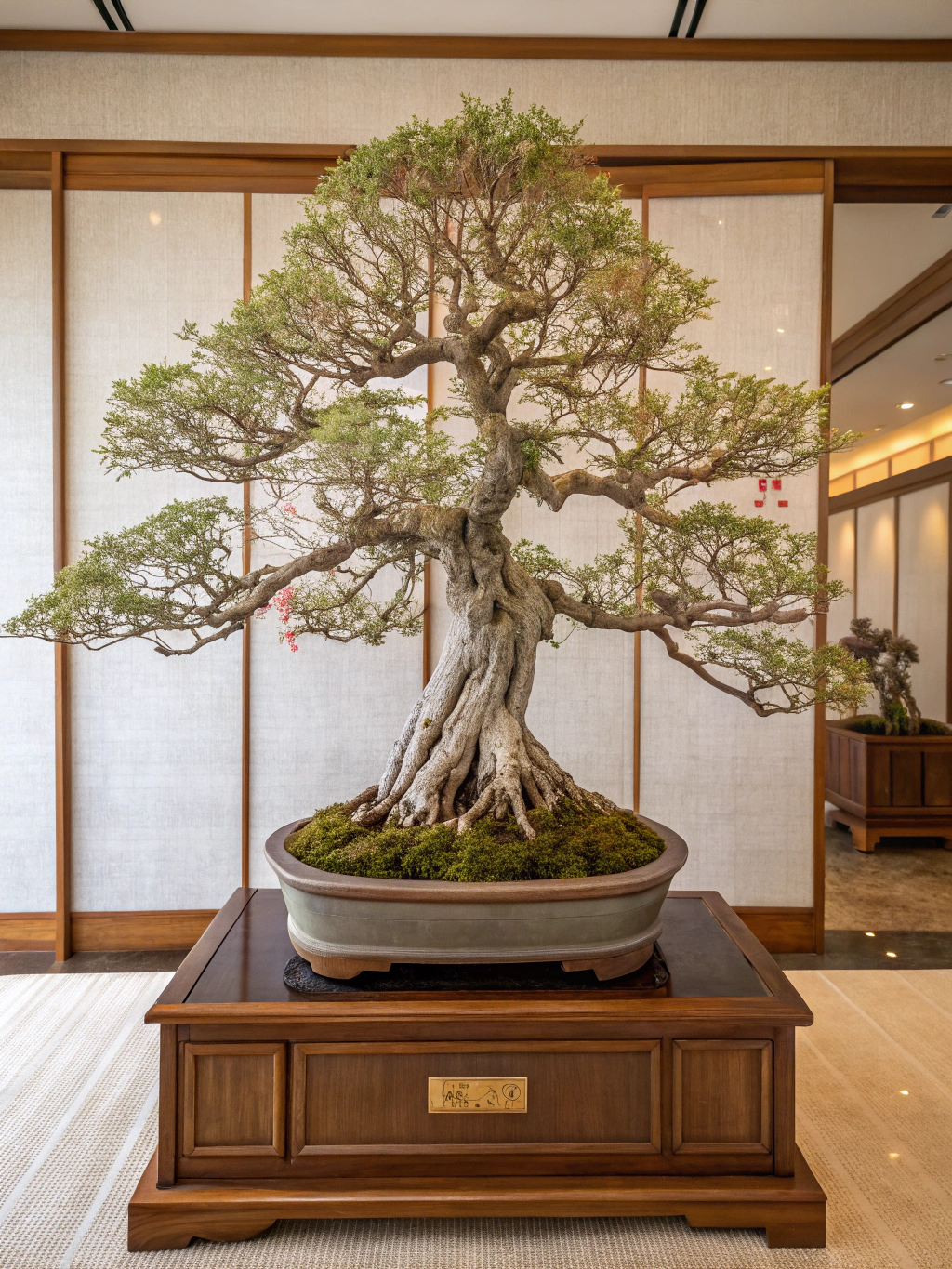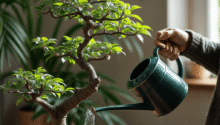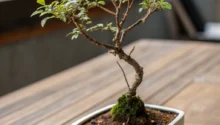Table of Contents
Welcome to the fascinating world of bonsai cultivation, a hobby that combines art, patience, and nature. For beginners, starting this journey can be both exciting and intimidating. Bonsai trees are not just miniature plants; they are living sculptures that require care, dedication, and a deep understanding of horticulture.
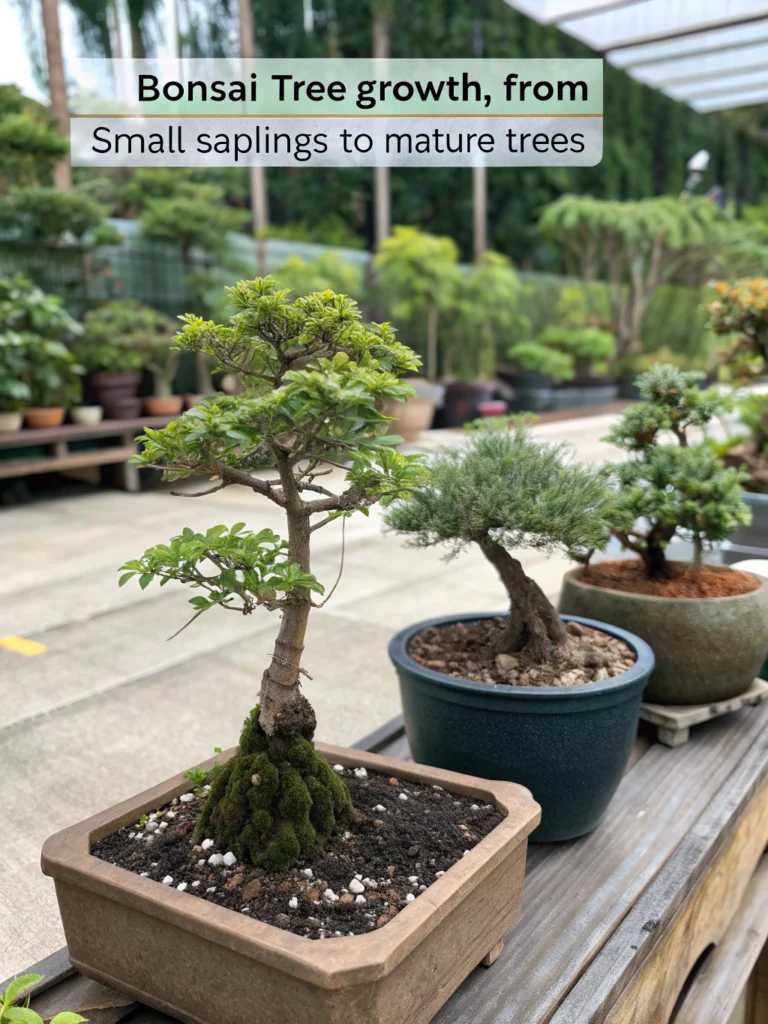
This guide is designed to introduce you to the basics of bonsai cultivation, from selecting the right species to the techniques of shaping and maintaining your bonsai. Whether you’re looking to start with a simple species or dive into more complex designs, this guide will provide you with the foundational knowledge needed to succeed.

OrganicGardeningIdeas Bonsai Insider
Get exclusive bonsai care tips, organic gardening trends, and special guides delivered to your inbox.
We respect your privacy and will never share your information. See our Privacy Policy.
Key Takeaways
- Understanding the basics of bonsai cultivation
- Selecting the right bonsai species for beginners
- Learning techniques for shaping and maintaining bonsai
- Understanding the importance of patience in bonsai cultivation
- Exploring the artistic and therapeutic aspects of bonsai
Understanding the Art of Bonsai
Embracing the art of bonsai requires a deep appreciation for the harmony between nature and human creativity. This ancient practice is not just about growing trees in containers; it’s an art form that embodies patience, dedication, and a profound understanding of the natural world.
The Philosophy and Meaning Behind Bonsai
Bonsai is rooted in the philosophical concepts of balance and harmony. It reflects the cultivator’s ability to shape and nurture nature into a work of art. The art of bonsai encourages a connection with nature, promoting a sense of calm and tranquility. Key aspects include:
- Balance: Achieving a balance between the tree’s growth and the container’s constraints.
- Harmony: Ensuring the tree’s shape and style are in harmony with its natural tendencies.
Distinguishing Between Bonsai and Regular Potted Plants
Unlike regular potted plants, bonsai trees are carefully cultivated and trained to achieve a specific shape or style. This involves regular bonsai care and bonsai tree maintenance
The art of bonsai is a rewarding hobby that combines horticulture, art, and patience, offering a unique way to connect with nature.
The Fascinating History of Bonsai Trees
Tracing the history of bonsai trees reveals a journey through time, culture, and geography. The art of bonsai has its roots in ancient horticultural practices, with evidence of its existence dating back thousands of years.
Ancient Origins in China and Japan
The concept of bonsai originated in ancient China, where it was known as “penjing” or “potted scenery.” This practice involved cultivating trees in containers to create miniature landscapes. The art form later spread to Japan, where it evolved into what we now recognize as bonsai, emphasizing the cultivation of individual trees in containers.
How Bonsai Spread to Western Culture
Bonsai trees were introduced to the Western world through various channels, including trade and cultural exchanges. The art form gained popularity in the West during the 20th century, as people became fascinated with the unique aesthetic and cultural significance of bonsai.
American Bonsai Movement
The American Bonsai Movement played a significant role in popularizing bonsai in the United States. Enthusiasts and artists began experimenting with native species and adapting traditional techniques to local conditions, contributing to the evolution of bonsai in Western culture.
Some key milestones in the history of bonsai include the development of new techniques, the introduction of bonsai to international exhibitions, and the establishment of bonsai clubs and societies. These efforts have helped to promote a deeper understanding and appreciation of bonsai worldwide.
Types of Bonsai Trees for Different Environments
The world of bonsai trees is diverse, with numerous species that can thrive indoors or outdoors. The choice of bonsai tree largely depends on the environment in which it will be grown and the level of care the grower can provide.
Indoor Bonsai Species
Indoor bonsai trees are ideal for those who live in apartments or have limited outdoor space. They require careful selection to ensure they can thrive in indoor conditions.
Ficus, Jade, and Chinese Elm
Species like Ficus, Jade, and Chinese Elm are popular choices for indoor bonsai. They are relatively hardy and can tolerate indoor conditions. Ficus is known for its small leaves and aerial roots, making it a favorite among bonsai enthusiasts. Jade is succulent and can store water, making it forgiving if you forget to water from time to time. Chinese Elm is versatile and can be styled in various forms.
Outdoor Bonsai Species
Outdoor bonsai trees are perfect for those with gardens or outdoor spaces. They generally require more sunlight and can be more seasonal in their care needs.
Juniper, Pine, and Maple
Juniper, Pine, and Maple are well-known outdoor bonsai species. Juniper is often used for its ability to be shaped into various styles. Pine requires careful pruning and is known for its long needles and elegant appearance. Maple is admired for its vibrant foliage and seasonal changes.
Recommended Species for First-Time Growers
For beginners, it’s essential to choose a hardy and forgiving species. Ficus and Chinese Elm are often recommended due to their adaptability and resilience.
| Species | Indoor/Outdoor | Care Level |
|---|---|---|
| Ficus | Indoor | Easy |
| Jade | Indoor | Easy |
| Chinese Elm | Both | Moderate |
| Juniper | Outdoor | Moderate |
| Pine | Outdoor | Challenging |
| Maple | Outdoor | Moderate |
How to Choose Your First Bonsai Tree
Choosing your first bonsai tree is an exciting yet critical decision. As a beginner, it’s essential to consider several factors to ensure you start with a healthy and manageable tree.
Pre-Trained vs. Nursery Stock Options
When selecting your first bonsai, you can either opt for a pre-trained bonsai or start with nursery stock. Pre-trained bonsai trees have already been shaped and styled, offering immediate aesthetic appeal. On the other hand, nursery stock allows you to train the tree from an early stage, providing a more engaging and educational experience.
Reliable Sources for Quality Bonsai
To find a quality bonsai, look for reputable sellers or bonsai clubs in your area. Online marketplaces can also be a good source, but be sure to check reviews and the seller’s reputation.
Health Indicators to Look For
A healthy bonsai tree is crucial for a successful bonsai experience. Check the tree’s overall condition, looking for signs of disease or pests.
Checking Roots, Trunk, and Foliage
Inspect the roots for signs of rot or damage, examine the trunk for any lesions or cracks, and check the foliage for healthy leaves or needles. A robust root system, a sturdy trunk, and vibrant foliage are indicators of a healthy bonsai.
| Health Indicator | Signs of Health | Signs of Poor Health |
|---|---|---|
| Roots | Robust, well-distributed | Rot, damage, or circling |
| Trunk | Sturdy, straight or gracefully curved | Lesions, cracks, or significant scars |
| Foliage | Vibrant, evenly colored | Yellowing, wilting, or sparse |
Essential Bonsai Tools and Materials
For beginners, understanding the essential bonsai tools and materials is a fundamental step in bonsai care. The right equipment not only makes the process more enjoyable but also ensures the health and aesthetic appeal of your bonsai tree.
Basic Tool Kit for Beginners
A basic tool kit is indispensable for any bonsai enthusiast. It typically includes:
- Concave cutters for pruning branches without leaving scars
- Shears for trimming leaves and small branches
- Wire cutters for removing wiring from branches
Concave Cutters, Shears, and Wire Cutters
Concave cutters are used to remove larger branches, creating a concave surface that heals quickly. Shears are versatile and used for various trimming tasks. Wire cutters are essential for removing wire without damaging the bark.
Selecting the Right Soil and Containers
The right soil and container are crucial for the health of your bonsai. The soil should be well-draining to prevent root rot, and the container should be appropriately sized for the tree’s root system.
Additional Supplies Worth Investing In
Other supplies that are worth investing in include a watering can with a fine nozzle, a humidity tray, and bonsai wire in various thicknesses. These tools will help you maintain your bonsai tree’s health and achieve the desired shape.
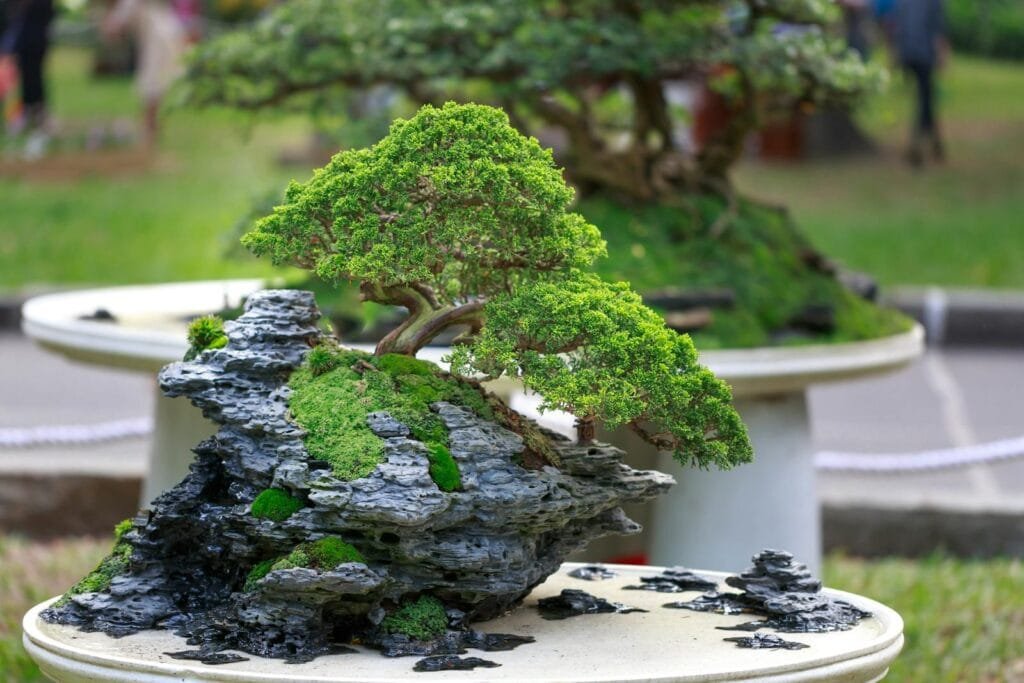
Step-by-Step Bonsai Pruning and Shaping
Bonsai pruning and shaping are not just about maintaining the tree’s health; they’re also about crafting a living work of art. Pruning involves cutting or removing certain parts of the tree to promote healthy growth and maintain its aesthetic appeal. Shaping, on the other hand, involves techniques like wiring to achieve the desired form.
Branch Pruning Techniques
Pruning is a critical skill for any bonsai enthusiast. It involves understanding when and how to cut branches to maintain the tree’s shape and promote healthy growth. There are several techniques to master, including:
- Pinching: Removing the tips of new growth to encourage branching and denser foliage.
- Cutting: Using sharp tools to remove larger branches or to shape the tree.
Structural vs. Maintenance Pruning
Structural pruning is done to shape the overall structure of the bonsai, often involving the removal of larger branches. Maintenance pruning, on the other hand, is an ongoing process that involves regular trimming to maintain the tree’s shape and health.
Wiring Methods for Beginners
Wiring is a technique used to shape the bonsai by bending branches into the desired position. It’s a delicate process that requires patience and care.
Applying and Removing Wire Safely
When applying wire, it’s essential to do so gently to avoid damaging the bark. The wire should be removed once the branch has taken the desired shape, or it may cause damage by cutting into the growing bark.
Creating Your Desired Bonsai Shape
The art of bonsai is highly subjective, and the desired shape can vary greatly depending on personal preference and the natural characteristics of the tree. By combining pruning and wiring techniques, you can create a bonsai that reflects your unique vision.
To achieve the desired shape, consider the natural growth patterns of your tree and work with, rather than against, its natural tendencies. Regular pruning and careful wiring will help you develop a bonsai that is not only healthy but also aesthetically pleasing.
Mastering Bonsai Tree Care Routines
Mastering the care routines for your bonsai tree is crucial for its health and longevity. Regular maintenance not only ensures the aesthetic appeal of your bonsai but also its overall well-being.
Proper Watering Techniques
Watering is one of the most critical aspects of bonsai care. The frequency of watering depends on several factors, including the species of the tree, the size of the pot, and the climate.
Signs of Over and Under-Watering
It’s essential to recognize the signs of both over and under-watering. Over-watering can lead to root rot, while under-watering can cause the leaves to dry out and fall off. Check the soil moisture by inserting a finger into the soil up to the first knuckle.
Light Requirements and Placement
Bonsai trees have different light requirements depending on their species. Some trees prefer full sun, while others thrive in partial shade. Placing your bonsai in the right location is vital for its health.
Fertilizing Schedule and Methods
Fertilizing provides your bonsai with the necessary nutrients for growth. The frequency and type of fertilizer depend on the tree’s species and the time of year.
Organic vs. Chemical Fertilizers
There are two main types of fertilizers: organic and chemical. Organic fertilizers release nutrients slowly and are less likely to cause damage, while chemical fertilizers act quickly but require careful application to avoid burning the roots.
| Fertilizer Type | Release Rate | Risk of Damage |
|---|---|---|
| Organic | Slow | Low |
| Chemical | Fast | High |
By mastering these care routines, you can ensure your bonsai tree remains healthy and continues to thrive.
Seasonal Bonsai Maintenance Guide
Bonsai care is a year-round commitment, with each season bringing its own set of challenges and opportunities. To keep your bonsai tree healthy and thriving, it’s crucial to understand the specific care it requires during different times of the year.
Spring and Summer Growth Management
During spring and summer, your bonsai tree is in its active growth phase. Regular watering and fertilizing are essential to support this growth. Ensure your tree receives sufficient light, but be cautious of extreme temperatures that can cause stress.
As your bonsai grows, it may require more frequent pruning to maintain its shape and encourage healthy growth. Use this period to refine the tree’s structure and remove any dead or damaged branches.
Fall Preparation Techniques
As fall approaches, it’s essential to prepare your bonsai for the coming winter. Begin by reducing the frequency of fertilizing, as the tree’s growth slows down. Continue to water your bonsai regularly, but be mindful of the changing weather conditions.
Fall is also an excellent time to repot your bonsai, if necessary, to refresh the soil and potentially change the tree’s container.
Winter Protection Strategies
Winter care for bonsai trees involves protecting them from harsh weather conditions. For outdoor bonsai, consider using a protective covering or moving the tree to a sheltered location to shield it from extreme cold and wind.
Overwintering Indoor and Outdoor Species
Indoor bonsai species require less drastic measures but still need careful attention. Keep them away from heating vents and radiators, which can dry out the air. Outdoor species, on the other hand, may need to be protected from frost. Research the specific needs of your bonsai species to ensure you’re providing the best care.
| Season | Care Requirements |
|---|---|
| Spring/Summer | Regular watering, fertilizing, and pruning |
| Fall | Reduce fertilizing, continue watering, consider repotting |
| Winter | Protect from extreme cold, reduce watering |
“The art of bonsai is not just about growing trees; it’s about cultivating patience, dedication, and a deep connection with nature.” – John Naka
Troubleshooting Common Bonsai Problems
Maintaining a bonsai tree requires not only regular care but also the ability to troubleshoot common problems. Bonsai enthusiasts often face challenges such as pests, diseases, and environmental stressors that can affect their trees’ health and appearance.
Identifying and Treating Pests
Pests are a common issue for bonsai growers. Regular inspections can help identify problems early. Common pests include spider mites, scale, and aphids. Treatment typically involves isolating the tree, pruning infested areas, and applying insecticidal soap or neem oil.
Disease Prevention and Treatment
Bonsai disease can be caused by fungal, bacterial, or viral infections. Prevention involves maintaining good hygiene, ensuring proper air circulation, and avoiding overwatering. Treatment may include removing infected areas, improving air circulation, and applying fungicides.
Reviving a Struggling Bonsai
A struggling bonsai can often be revived with proper care adjustments. Check for common issues such as underwatering, overwatering, or nutrient deficiencies. Adjust watering schedules, fertilize appropriately, and ensure the tree is receiving sufficient light.
Emergency Care Procedures
In cases where a bonsai is severely stressed or damaged, emergency care may be necessary. This can include repotting, root pruning, or protective measures against extreme weather conditions.
| Common Bonsai Problems | Causes | Solutions |
|---|---|---|
| Pests | Infestation by insects like spider mites, scale, and aphids | Isolate, prune infested areas, apply insecticidal soap or neem oil |
| Diseases | Fungal, bacterial, or viral infections | Remove infected areas, improve air circulation, apply fungicides |
| Environmental Stress | Underwatering, overwatering, nutrient deficiencies | Adjust watering, fertilize, ensure proper light exposure |

Creating Different Bonsai Styles
The art of bonsai styling encompasses a range of techniques and styles, each with its unique characteristics. Bonsai enthusiasts can explore various bonsai styles to create visually stunning and harmonious compositions.
Formal and Informal Upright Styles
Formal upright bonsai styles are characterized by a straight, vertical trunk and balanced branch structure. In contrast, informal upright styles feature a more natural, curved or twisted trunk. Both styles require careful pruning and training to achieve the desired shape.
Cascade and Semi-Cascade Techniques
Cascade bonsai styles involve training the tree to grow downwards, often below the base of the pot. Semi-cascade styles are similar but do not extend below the pot’s edge. These styles require careful wiring and pruning to achieve the desired cascading effect.
Forest and Group Planting Methods
Forest and group planting involve multiple trees planted together in a single container. This style creates a miniature forest landscape and requires careful selection of trees and design planning.
Design Principles for Multiple Tree Arrangements
When creating multiple tree arrangements, consider the overall composition, balance, and harmony. Key principles include varying tree heights, spacing, and root placement to create a natural, visually appealing landscape.
Advancing Your Bonsai Skills
For those looking to advance their bonsai skills, several key techniques can make a significant difference. As you continue to nurture your bonsai, you’ll find that mastering advanced methods is crucial for the long-term health and aesthetic appeal of your tree.
Repotting and Root Pruning
Repotting is a critical process that involves transferring your bonsai to a new container, usually with fresh soil, to maintain its health. Root pruning is an essential part of this process, as it prevents the roots from becoming too entangled and promotes healthy growth.
When and How to Repot Safely
Repotting should be done during the tree’s dormant season to minimize stress. The process involves gently removing the tree from its container, pruning the roots, and replanting it in a new pot with appropriate soil. Care must be taken to avoid damaging the roots.
Deadwood Techniques: Jin and Shari
Deadwood techniques, such as Jin and Shari, are used to create the illusion of age and weathering on your bonsai. Jin involves stripping the bark from a branch tip, while Shari refers to the removal of bark from a larger area, often creating a natural-looking scar.
Air-Layering and Propagation Methods
Air-layering is a propagation technique that involves creating a new root system on a branch while it’s still attached to the parent tree. This method allows for the creation of new bonsai trees with the same characteristics as the original.
| Technique | Description | Benefits |
|---|---|---|
| Repotting | Transferring the bonsai to a new container with fresh soil | Maintains soil quality, prevents root bound |
| Root Pruning | Pruning the roots to prevent entanglement | Promotes healthy root growth, enhances tree stability |
| Air-Layering | Creating a new root system on a branch | Allows for propagation of new trees with identical characteristics |
Conclusion
Cultivating bonsai trees is a rewarding hobby that requires patience, dedication, and creativity. As a beginner, starting your bonsai journey can be both exciting and intimidating. This guide has provided a comprehensive overview of the basics of bonsai care, from understanding the art of bonsai to advanced techniques for shaping and maintaining your trees.
By following the steps outlined in this guide, you can develop the skills needed to grow and care for your bonsai trees. Remember, the art of bonsai is a journey, not a destination. With practice and patience, you can create beautiful, thriving bonsai trees that bring joy and serenity to your life. Whether you’re looking to start with a pre-trained bonsai or nursery stock, the world of bonsai for beginners is full of possibilities.
As you continue on your bonsai journey, don’t be afraid to experiment and try new techniques. With time and practice, you’ll develop your unique style and voice in the art of bonsai. Happy growing!
FAQ
What is a bonsai tree?
A bonsai tree is a miniature tree grown in a container, trained and shaped using various techniques to achieve a desired aesthetic.
How often should I water my bonsai tree?
The frequency of watering depends on factors such as the species, climate, and soil mix. Check the soil moisture daily, and water when the top inch of soil feels dry.
What are the best species for indoor bonsai?
Popular species for indoor bonsai include Ficus, Jade, and Chinese Elm, which are relatively low-maintenance and can thrive in indoor conditions.
How do I prune my bonsai tree?
Pruning involves cutting or removing branches to maintain shape and promote healthy growth. Use concave cutters and shears, and prune during the dormant season for most species.
Can I grow a bonsai tree from seed?
Yes, you can grow a bonsai tree from seed, but it requires patience and careful nurturing. It’s often more practical to start with a pre-trained tree or nursery stock.
What is the difference between pre-trained and nursery stock bonsai?
Pre-trained bonsai trees have already been shaped and trained, while nursery stock refers to young trees that have not yet been styled or trained.
How do I fertilize my bonsai tree?
Fertilize your bonsai tree during the growing season using a balanced, water-soluble fertilizer. You can choose between organic and chemical fertilizers, depending on your preference.
What are some common pests and diseases that affect bonsai trees?
Common pests include spider mites, mealybugs, and scale. Diseases can include root rot, leaf spot, and fungal infections. Regularly inspect your tree and take action promptly if you notice any issues.
How do I protect my bonsai tree from extreme temperatures?
Protect your bonsai tree from extreme temperatures by providing shelter, using insulation, and adjusting its placement according to the season.
Can I display multiple bonsai trees together?
Yes, you can display multiple bonsai trees together using forest or group planting methods, creating a harmonious and visually appealing arrangement.
What are the basic tools needed for bonsai care?
Essential tools include concave cutters, shears, wire cutters, and a watering can. Investing in quality tools will make caring for your bonsai tree easier and more effective.

OrganicGardeningIdeas Bonsai Insider
Get exclusive bonsai care tips, organic gardening trends, and special guides delivered to your inbox.
We respect your privacy and will never share your information. See our Privacy Policy.

